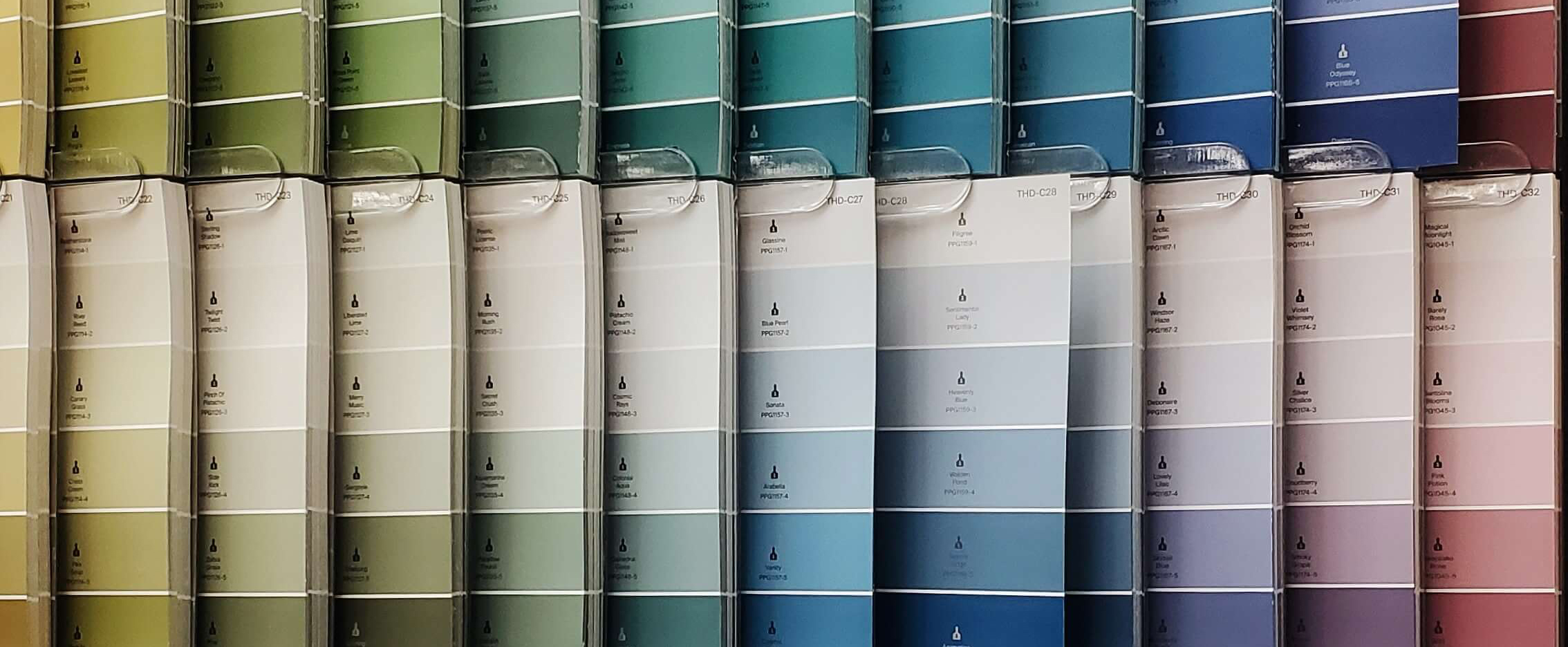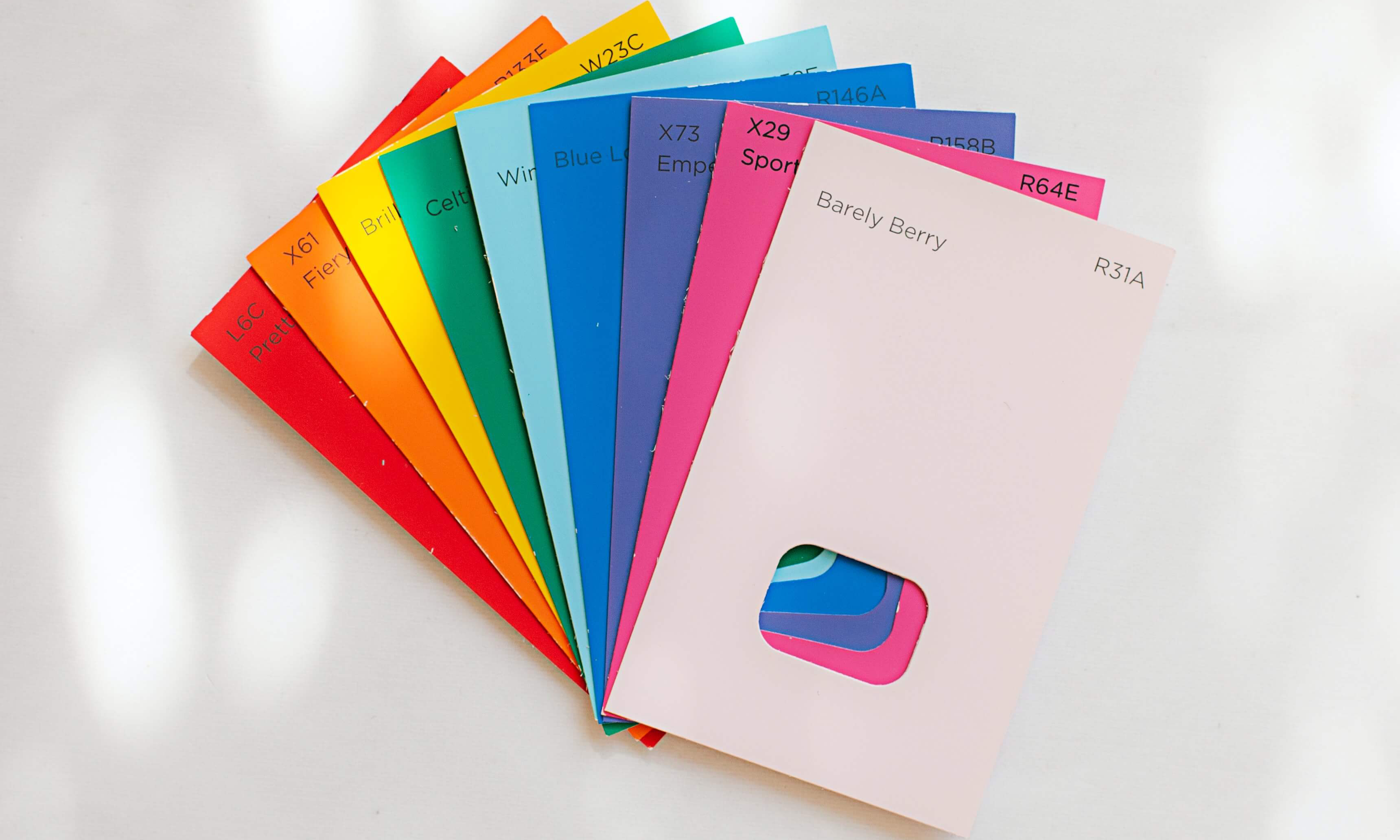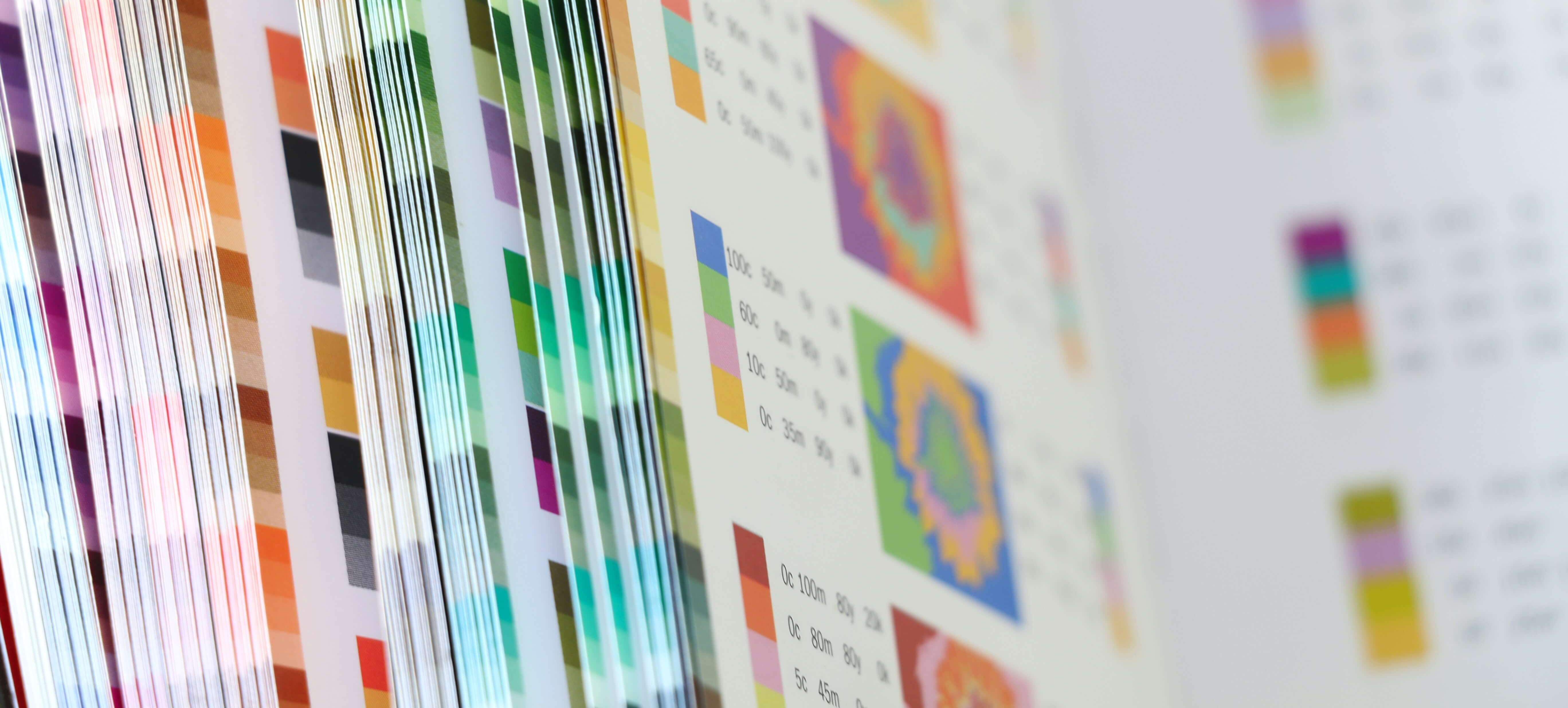TABLE OF CONTENTS
- What is a color match tool?
- CMYK Printing
- Difference Between CMYK and PMS
- How to Convert Files from Pantone to CMYK
- PANTONE to CMYK: Designing for Print
- Coated vs Uncoated Pantone Colors
- Conclusion
- FAQs
- Home
- content hub
- Pantone to CMYK: How to Match Your Colors for Printing
Pantone to CMYK: How to Match Your Colors for Printing
Emma Davis
Content Writer
Feb 15, 20198451 views
Feb 15, 20198451 views

TABLE OF CONTENTS
- What is a color match tool?
- CMYK Printing
- Difference Between CMYK and PMS
- How to Convert Files from Pantone to CMYK
- PANTONE to CMYK: Designing for Print
- Coated vs Uncoated Pantone Colors
- Conclusion
- FAQs
Most amateur and professional designers have dealt with color accuracy when printing a piece because including a range of colors is super important for any work. When it comes to custom printing, PMS Colors are created from their own formula or order by number. So if you are finding it frustrating to be consistent in terms of color, this post might be just what you need to get some perspective.

What is a color match tool?
A color match tool is a device or software that helps you match colors accurately between different color systems, such as Pantone and CMYK.
First of all, let’s check the printing basics. CMYK is a four-color print process consisting of Cyan, Magenta, Yellow, and Black. Here’s a quick overview:
CMYK Printing
-
Uses the 4 standardized base colors (cyan, magenta, yellow and black).
-
The most widely used and cost-effective color system in commercial printing.
-
Small dots of color are printed on paper types in various angles for a printed image that is high in quality.
-
Colors of each printed image will be identical.
At 4OVER4.COM, as our name implies, we provide 4/4 color printing for a wide range of print materials including but not limited to business cards, postcards, brochures, calendars, among others. If you’re looking for a specific product, feel free to visit our catalog to find your desired product.
Standardized color keys such as the Pantone Matching System (PMS) help designers prevent any issues like color mistakes or variations. Keep in mind that PMS is an ink, which can be purchased and blended, providing a perfect match to the Pantone color guide. Here’s how you can get the best of both color systems. Next time graphic designers ask you about PMS Color do not feel offended. They’re talking about the Pantone Matching System, a set of over 1000 colors that cannot be simulated by combination of other ink. They are also known as solid or spot colors, because their mixed with such precision that you can see no traces of it. Special colors like metallics and fluorescents belong to this system and can be used to print custom postcards. Only a few of them can be accomplished by mixing the CMYK gamut.
Difference Between CMYK and PMS
When it comes to printing and design, understanding the difference between CMYK (Cyan, Magenta, Yellow, and Black) and PMS (Pantone Matching System) is essential. While both systems are commonly used in the color industry, they are not interchangeable and have very different uses and unique qualities. By understanding what sets them apart, you can choose the right cmyk color profile for your project’s specific needs.
CMYK is the standard color model used in full-color printing, also known as four-color process printing. It employs four ink colors: cyan, magenta, yellow, and black, which is why it’s called CMYK. This is achieved by adjusting their percentages, forming a vast color spectrum. This approach is particularly suited for designs or materials that feature intricate imagery, like photos or dense artwork. For example, printing a high-quality image of a sunset relies heavily on the CMYK color model, as it mixes colors through subtractive color mixing, producing stunning gradations and delicate nuances of tone. Because CMYK is created by mixing the inks during the physical production of the print, there can be variations between print runs. The final color output is influenced by factors such as the printer used, the paper selected, and even the lighting conditions in which the colors are viewed.
On the other hand, PMS (short for Pantone Matching System) is a color system developed by Pantone to provide a standardized, universal color system. Like offset printing, it relies on premixed ink formulas to create consistent, spot colors. Each PMS color is identified by a specific number, which aids in maintaining color consistency. This quality makes PMS especially valuable in branding, where the appearance of colors must remain uniform. For instance, companies like Coca-Cola or Starbucks utilize PMS to ensure their signature red or green looks identical across all materials, regardless of the printer or print shop. Furthermore, PMS offers a broader variety of special colors, including metallics and fluorescents, that CMYK cannot reproduce accurately.
Whether to use CMYK or PMS is typically based on the needs of the project. If your design involves a lot of photos, then CMYK is the preferred color mode. It’s great, of course, if you need a very large range of colors. When you’re designing a logo or corporate stationery, color matching is extremely important. In either of these scenarios, sticking with PMS will help you maintain consistency. A few projects masterfully blend both systems. They may use CMYK for photography and imagery but PMS for logos or specific accents to take advantage of the strengths of each.
How to Convert Files from Pantone to CMYK
Since converting any file from Pantone to CMYK can cause color to shift, it’s crucial to make any necessary adjustments to maintain color consistency. Be sure to consult the Pantone color guide to understand how specific colors will appear after the printing process.
-
To convert files using Photoshop, just click on Image, Mode and CMYK color.
-
To convert files using Adobe Illustrator, click on Edit, Edit Colors and then click on Convert to CMYK. Next, you need to click twice on one of the Pantone colors in the palette. After that, go to the Color Mode menu and click on CMYK.
-
Also, go to the Color Type menu and click on Process before clicking on OK. Last but not least, make sure to repeat these quick steps for each and every one of the Pantone colors in your piece.
-
To convert files using InDesign, click on Window, Color and Swatches. Next, go to the upper right corner and click on the arrow before choosing Select All Unused. After that, delete unused colors by clicking on the trashcan icon. Now you need to click twice on one of the Pantone colors in the palette.
-
Go to the Color Mode menu before choosing CMYK and go to the Color Type menu before choosing Process. Click OK. Last but not least, make sure to repeat these quick steps for each and every one of the Pantone colors in your piece.

PANTONE to CMYK: Designing for Print
Here are some tips to ensure your professional digital printing services achieve the highest quality standards in color reproduction and consistent color matching.
-
Use an online tool to convert Pantone colors to RGB color and check out what each color looks like on your screen.
-
You must use PMS or CMYK color palettes when designing for printing.
-
Pantone offers a myriad of formula guides and chip books that showcase PMS colors. They help you see exactly how colors will appear once printed using CMYK inks. Retailing at $155, this very helpful color guide by Pantone is a great resource when choosing PMS colors for printed pieces. It lets designers see what the PMS color looks like after it is created on a CMYK printer.
-
Once you choose a printing company, make sure to send a hard copy of your artwork in order to give them an idea of how you wish the color to appear.
-
Schedule enough time to allow the printing company to provide you with physical full color copies/proofs.
-
Switching your workspaces to CMYK is a simple and free procedure that lets you avoid costly issues during production.
-
Keep in mind that screens are not calibrated the same way, thus colors look different across screens. A standard CRT monitor’s colors are more vivid, while colors on an LCD monitor will appear more muted and sometimes washed out.
Coated vs Uncoated Pantone Colors
If you are producing a design with Pantone colors, understanding the difference between coated and uncoated options is crucial. These differences significantly affect how colors appear when printed on various materials. It’s essential to select the most appropriate paper type for your project and the environment where it will ultimately be displayed. Coated and uncoated refer to the paper stock rather than the ink itself. This seemingly simple but vital distinction can greatly influence how your design will print, particularly when considering the CMYK color profiles involved.
Coated Pantone colors are printed on paper with a slick, shiny coating, which is the most common type used in periodicals, catalogs, and product packaging. The glossy coating prevents the ink from absorbing too deeply into the paper, producing bright and rich colors with sharp detail. An intense deep red or bright blue can appear more vibrant and dramatic on a coated sheet, thanks to the shiny surface that enhances the visual impact. Utilizing coated Pantone colors ensures sharp, vivid graphics that leap off the page, making them ideal for projects where color consistency is essential, such as branding materials.
Uncoated Pantone colors are meant for paper with a non-glossy, absorbent surface. This style of paper is usually reserved for high-end stationery and books. It provides printed materials with an organic, understated appearance. Without the coating, the ink would be absorbed into the paper fibers. Because of this, the colors tend to appear more subtle or a bit muted. On uncoated paper, this pastel shade glows with a subtle, ethereal air. This effect can work wonders on designs that need to exude a natural or sophisticated feel. People frequently go with uncoated colors for projects that want a more tactile, approachable feeling. This is very true of things like wedding invitations and other personal correspondence.
It's important to remember that even the same Pantone color can look different depending on the paper type used. For example, a Pantone 186 C would appear as a bright scarlet red on coated stock, while Pantone 186 U presents a much darker, duller shade when printed on uncoated stock. This variability highlights the necessity of considering how your design will be perceived by your audience. Always request proofs or sample prints to ensure the final product aligns with your expectations. This step is vital in ensuring that your design intent truly comes through in the final print, as it can significantly affect the overall color reproduction quality.
Ready to Convert Pantone to CMYK?
Definitely! Although we highly recommend that you pick your colors from paper charts, there is a range of online converters that can be used at no cost whatsoever. This easy-to-use converter has proven to be really useful in the past. It locates candidates of proper Pantone equivalents for any CMYK process color, based on a conversion table. Check out this color chart on our resourceful website that can also be used as a reference guide. Have you used any other online converters in the past? We would love to hear your thoughts. Please feel free to kindly leave a comment below. Remember you can get 30% OFF your first order just by signing up to 4OVER4.COM which can help with all of your professional printing needs. Get your artwork ready and order now!
Pantone or CMYK, quality printing will make the difference for your product. Only trust your projects to professionals. It’ll save you money and headaches in the long run. Make sure choose your designs from our design templates and also to leave us a comment below on what you think about our services.

Conclusion
Most amateur and professional designers have dealt with color accuracy when printing a piece because including a range of colors is super important for any work
Most amateur and professional designers have dealt with color accuracy when printing a piece because including a range of colors is super important for any work. When it comes to paint color, it can be tricky to match colors perfectly. Using tools like the Benjamin Moore or Nix spectrophotometer can help ensure you get the right colors with professional printing. By using these devices, you can analyze color values and find the best match for your project. Whether you are looking for a specific Sherwin-Williams or Behr color, these tools can help you match paint with ease.
Whether you are trying to find a custom color or simply looking for the color you need, these tools can help you find the exact match you are looking for. By exploring the world of color through a color wheel or texture analysis, you can pinpoint the exact color you desire.
FAQs
Q: How does a color sensor work in color matching?
A color sensor utilizes technology to scan and analyze colors, providing digital color readings that can be matched to specific cmyk color profiles or swatches.
Q: What is Color Muse and how does it help in color matching?
Color Muse is a colorimeter device that connects to a smartphone app, enabling users to capture and match paint colors, ensuring accurate color reproduction from brands like Benjamin Moore or Sherwin Williams.
Q: Can I use the Nix Mini for color matching paint?
A: Yes, the Nix Mini is a popular color sensor that can accurately match paint colors by scanning and comparing them to a database of cmyk color profiles and color information.
Q: How do I match colors from a color wheel to CMYK for printing?
To match colors from a color wheel to CMYK colors for printing, you can utilize color conversion tools or software that accurately translate the color information into a specific CMYK color profile.
Q: Is there a tool that helps with paint color matching for home projects?
A: Yes, tools like Color Muse or the Nix Mini 2 can assist in paint color matching for home projects by providing accurate color information and suggestions for specific colors.
Q: What are some features of the Instapick Color Sensor for color matching?
The Instapick Color Sensor offers Bluetooth connectivity and color analysis, enabling users to match colors from different surfaces for paint projects or design inspiration using cmyk color profiles.
More from Printing Tips
9517
In the world of networking, a business card serves as more than just a piece of paper; it’s a vital tool for making lasting connections.
Matthew Prince
Dec 28, 2023
7821
New digital features have been introduced to business cards, making business connections more effective than they used to be. Technology has r
Matthew Prince
Dec 20, 2023
17105
First impression matters, especially when marketing your small business. An effective business card design will help you impress potential pro
Matthew Prince
Dec 14, 2023
2794
Creative branding is critical for many businesses. After all, there’s nothing worse than just blending into the market. But brands can stand
Matthew Prince
Dec 6, 2023
2935
Low-quality business cards will cost you money. One report published that
Matthew Prince
Nov 28, 2023
12625
You can sell more goods or services with business card designs that start conversations. In contrast, clients forget bland card designs as soo
Matthew Prince
Nov 22, 2023
2702
In today’s interconnected world, the importance of a well-crafted international business card can't be overstated. As we navigate di
Matthew Prince
Nov 1, 2023
3154
Business cards are not as we know them anymore. For example, interactive business cards now combine the physical nature of traditional cards w
Matthew Prince
Oct 4, 2023









